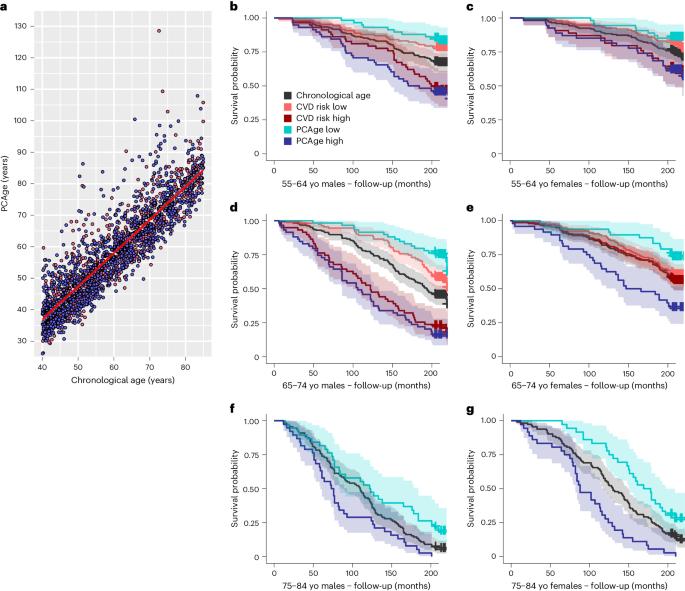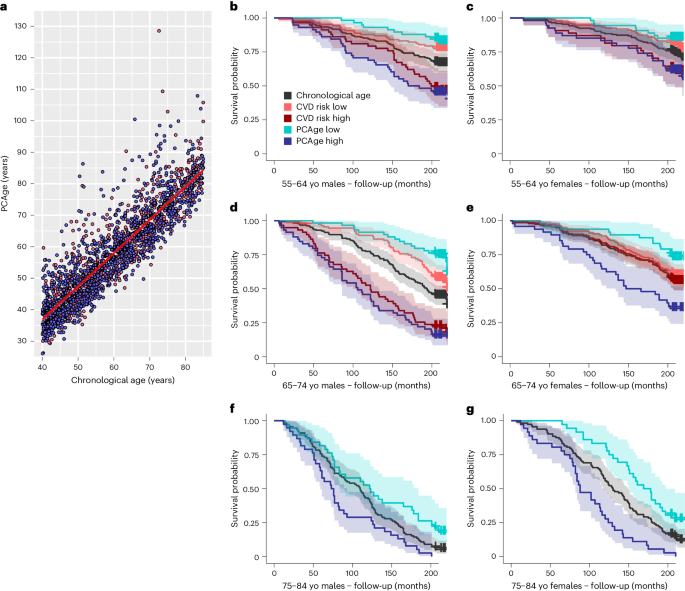Principal component-based clinical aging clocks identify signatures of healthy aging and targets for clinical intervention
IF 17
Q1 CELL BIOLOGY
引用次数: 0
Abstract
Clocks that measure biological age should predict all-cause mortality and give rise to actionable insights to promote healthy aging. Here we applied dimensionality reduction by principal component analysis to clinical data to generate a clinical aging clock (PCAge) identifying signatures (principal components) separating healthy and unhealthy aging trajectories. We found signatures of metabolic dysregulation, cardiac and renal dysfunction and inflammation that predict unsuccessful aging, and we demonstrate that these processes can be impacted using well-established drug interventions. Furthermore, we generated a streamlined aging clock (LinAge), based directly on PCAge, which maintains equivalent predictive power but relies on substantially fewer features. Finally, we demonstrate that our approach can be tailored to individual datasets, by re-training a custom clinical clock (CALinAge), for use in the Comprehensive Assessment of Long-term Effects of Reducing Intake of Energy (CALERIE) study of caloric restriction. Our analysis of CALERIE participants suggests that 2 years of mild caloric restriction significantly reduces biological age. Altogether, we demonstrate that this dimensionality reduction approach, through integrating different biological markers, can provide targets for preventative medicine and the promotion of healthy aging. Using a dimensionality reduction approach, Fong et al. generated a clinical aging clock (PCAge) that delineates healthy and unhealthy aging trajectories. They provide a streamlined version (LinAge) that maintains predictive power, and they demonstrate how the clock can be tailored to available data using the CALERIE study.


基于主成分的临床老化时钟可识别健康老化的特征和临床干预的目标。
测量生物年龄的时钟应能预测全因死亡率,并为促进健康老龄化提供可操作的见解。在这里,我们通过主成分分析对临床数据进行降维处理,生成了临床衰老时钟(PCAge),识别出了区分健康和不健康衰老轨迹的特征(主成分)。我们发现了新陈代谢失调、心脏和肾功能障碍以及炎症的特征,这些特征预示着不成功的衰老,我们还证明了这些过程可以通过成熟的药物干预来影响。此外,我们还在 PCAge 的基础上直接生成了一个简化的衰老时钟(LinAge),它保持了同等的预测能力,但所依赖的特征却大大减少。最后,我们通过重新训练定制的临床时钟(CALinAge),证明了我们的方法可以根据个人数据集进行定制,用于热量限制的 "减少能量摄入的长期影响综合评估"(CALERIE)研究。我们对 CALERIE 参与者的分析表明,2 年的轻度热量限制会显著降低生物年龄。总之,我们证明了这种降维方法通过整合不同的生物标志物,可以为预防医学和促进健康老龄化提供目标。
本文章由计算机程序翻译,如有差异,请以英文原文为准。
求助全文
约1分钟内获得全文
求助全文

 求助内容:
求助内容: 应助结果提醒方式:
应助结果提醒方式:


